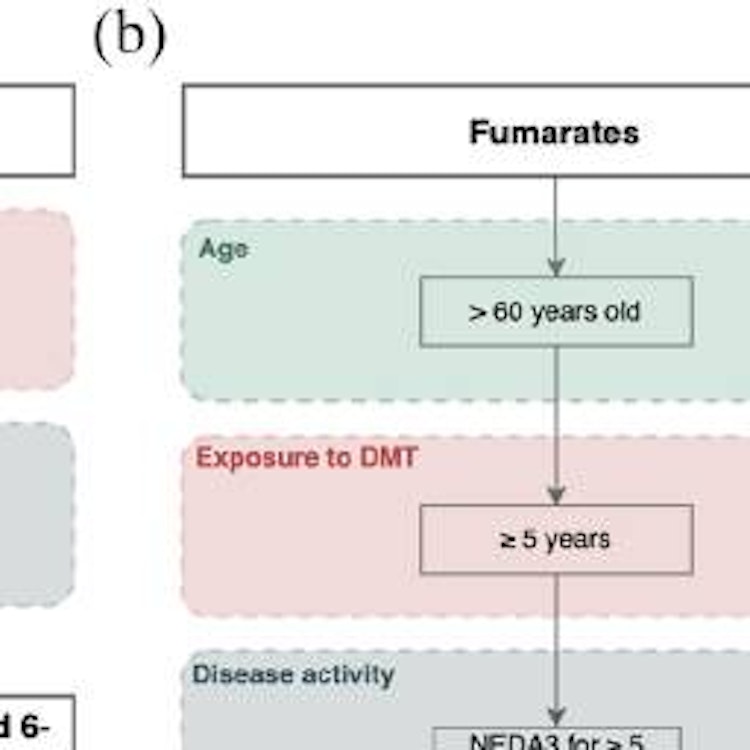
Personalized treatment decision algorithms for the clinical application of serum neurofilament light chain in multiple sclerosis: A modified Delphi Study
Background: Serum neurofilament light (sNfL) chain levels, a sensitive measure of disease activity in multiple sclerosis (MS), are increasingly considered for individual therapy optimization yet without consensus on their use for clinical application. Objective: We here propose treatment decision algorithms incorporating sNfL levels to adapt diseasemodifying therapies (DMTs). Methods: We conducted a modified Delphi study to reach consensus on algorithms using sNfL within typical clinical scenarios. sNfL levels were defined as “high” (>90th percentile) vs “normal” (<80th percentile), based on normative values of control persons. In three rounds, 10 international and 18 Swiss MS experts, and 3 patient consultants rated their agreement on treatment algorithms. Consensus thresholds were defined as moderate (50%–79%), broad (80%–94%), strong (≥95%), and full (100%). Results: The Delphi provided 9 escalation algorithms (e.g. initiating treatment based on high sNfL), 11 horizontal switch (e.g. switching natalizumab to another high-efficacy DMT based on high sNfL), and 3 de-escalation (e.g. stopping DMT or extending intervals in B-cell depleting therapies). Conclusion: The consensus reached on typical clinical scenarios provides the basis for using sNfL to inform treatment decisions in a randomized pragmatic trial, an important step to gather robust evidence for using sNfL to inform personalized treatment decisions in clinical practice.
Download
yaldizli_2025.pdfResearchers



